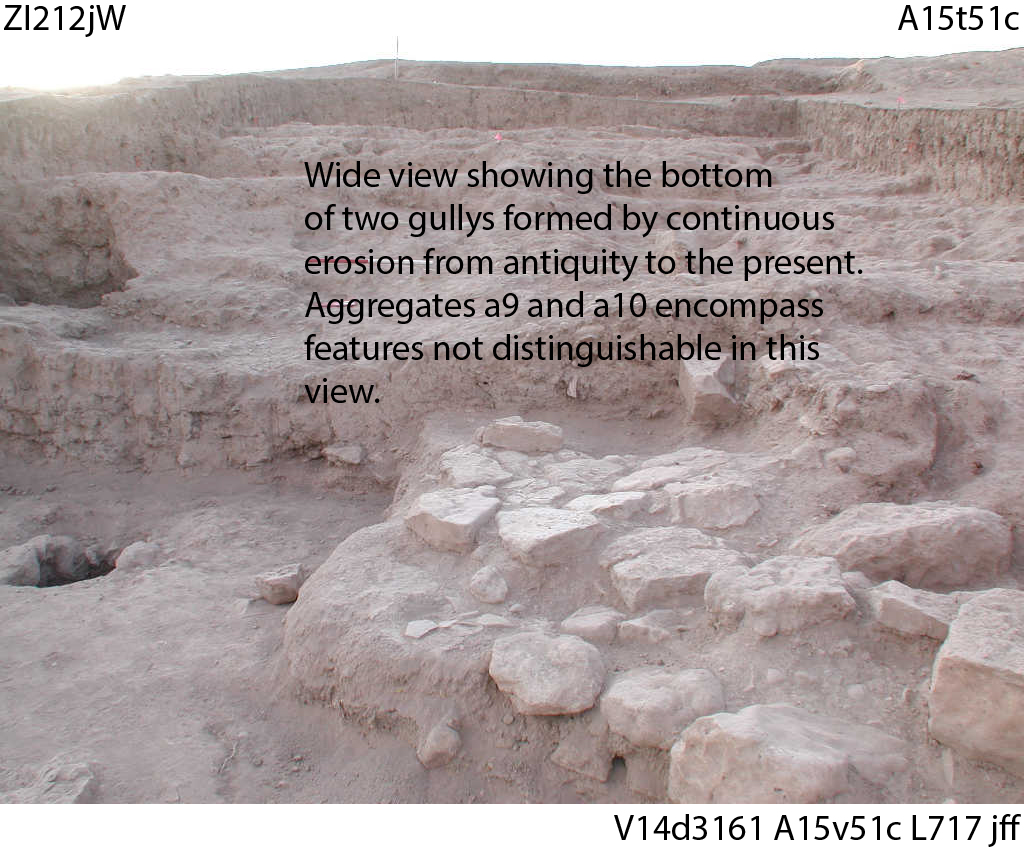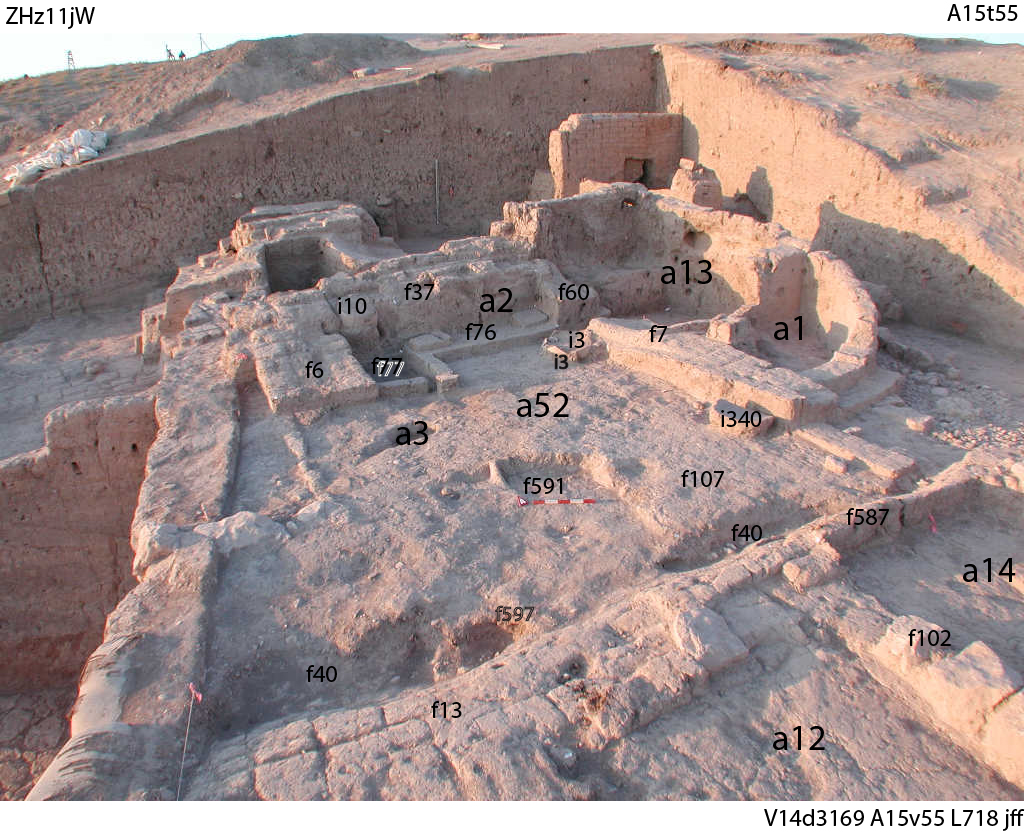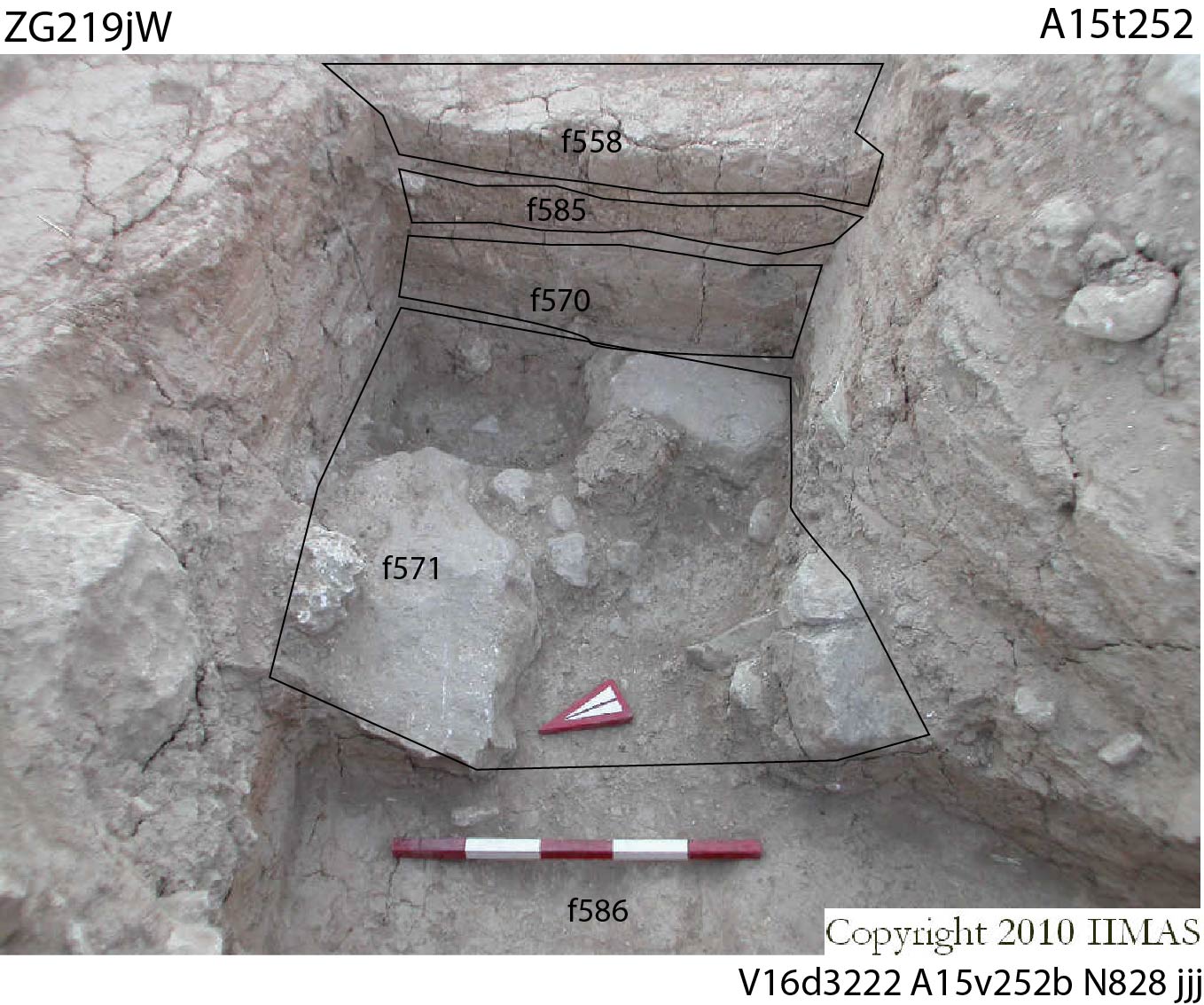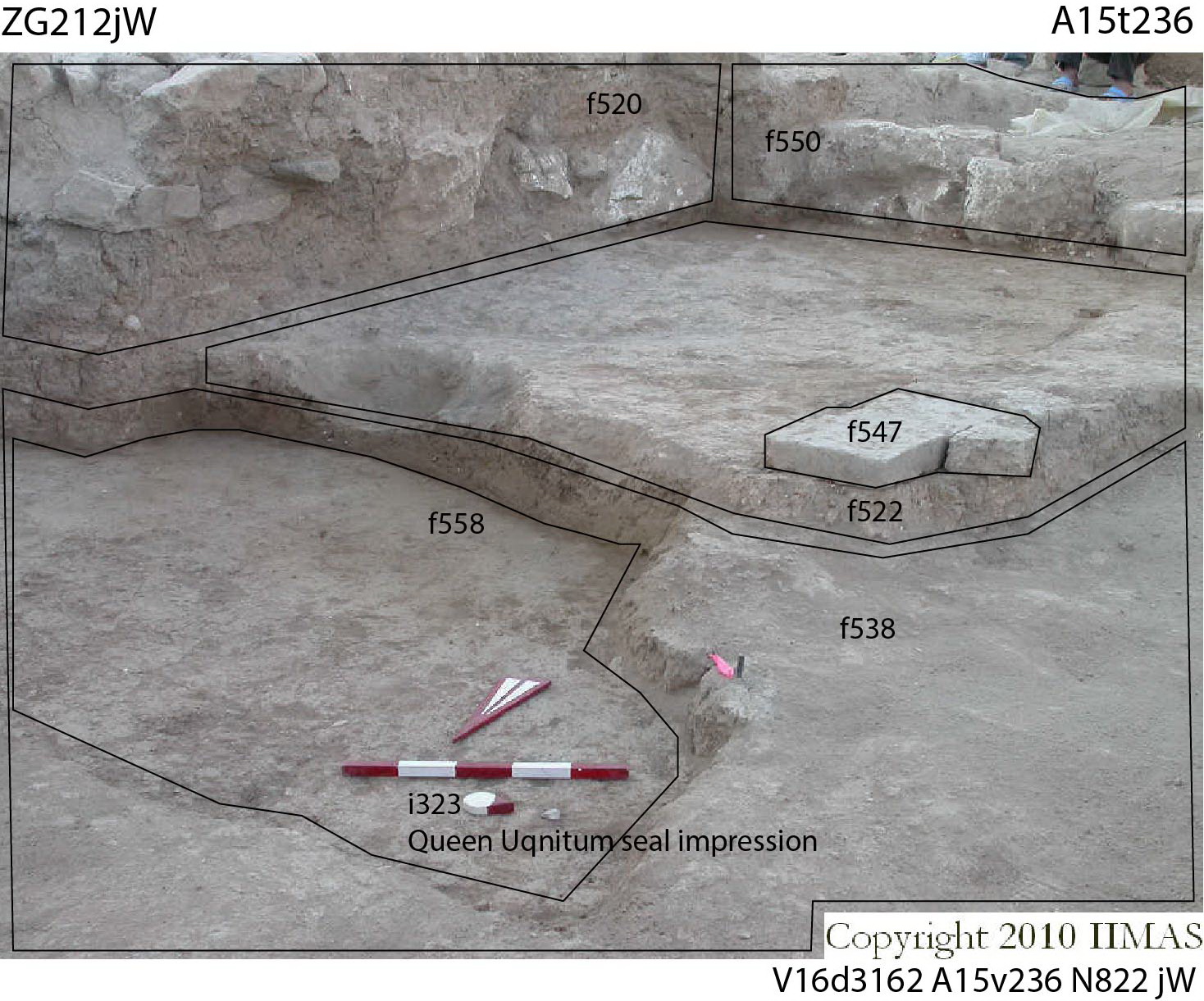Back to top: Loose Materials
Gullys
|
Erosive action of water over time provided the effects most visible in the present time. Two large gullys, a9 and a10, that ran downhill east to west carried away a significant portion of the Khabur town and severely damaged Isin Larsa and UrIII structures and surfaces. A smaller gully, a27 (f40), cut through the industrial area, a52, damaging the north wall of building a48. The palace had been built into the west-facing hillside of the tell. The gullys began to form in the open areas of the palace after it was abandoned, but the walls remained intact to contain accumulations and channel the flow. Athough the gullys influenced what uses occurred in each period, nothing specific can be determined.
|
Back to top: Loose Materials
Living Accumulations
|
Despite the actions of gullys throughout the unit, the reception area of the Tupkish palace remained relatived unaffected. Accumlations in room a41 show the effects of use over time. First, the mudbrick floor f558, determined to have been associated with the formal couryard surface f216, and the plaster surface of the intervening room a38, had already been re-paved over mudbrick floor f585. After transition from formal to domestic use, living accumlations began to accrue. The first, f538, contained the seal impression of Queen Uqnitum, among others. The second accumulation, f522, contained numerous sherds. The third was associated with a small surface of baked bricks f547. This was finally covered with the material used in the remodel associated with Queen Tar'am Agade.
|
Back to top: Loose Materials
Brickfall and Topsoil
There were two types of brickfall that impacted the unit. The first came from the walls of the Khabur town after it was abandoned. Brickfall f38 is one example. It probaly arose from the natural deterioration of a wall after abandonment and consisted of a collection of individually identifiable bricks. It does not seem to have impeded access to any activity. The second type of brickfall arose from the demolition of major interior palace walls during the remodel for Queen Tar'am Agade. Brickfall f601 is such an example. It consisted of a single, large wall section whose bricks were still held together with mortar. Rather than impede use it facilitated the remodel.
Generally there was little topsoil. This situation arose because much of the northern part of the unit had been excavated as part of A13 in the previous season. In the southern portion the continuous scouring of the tell surface by water in the gullys inhibited formation of a recognizable topsoil layer.
|



